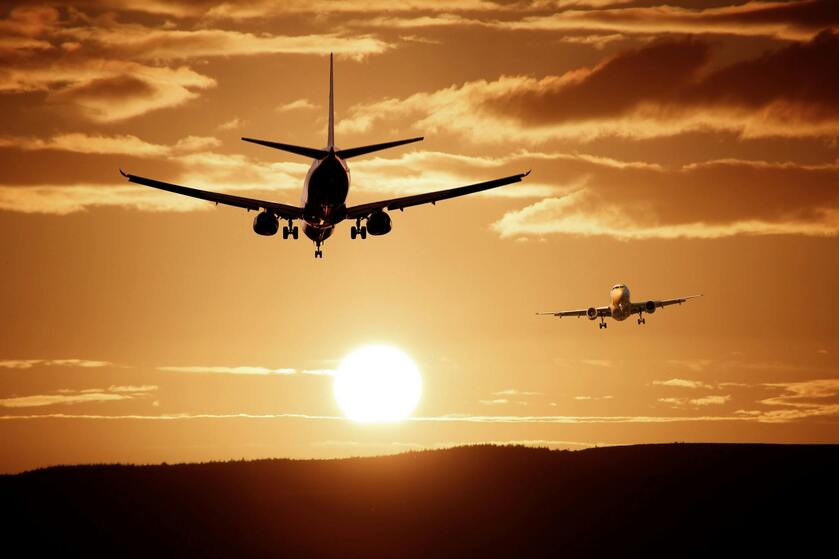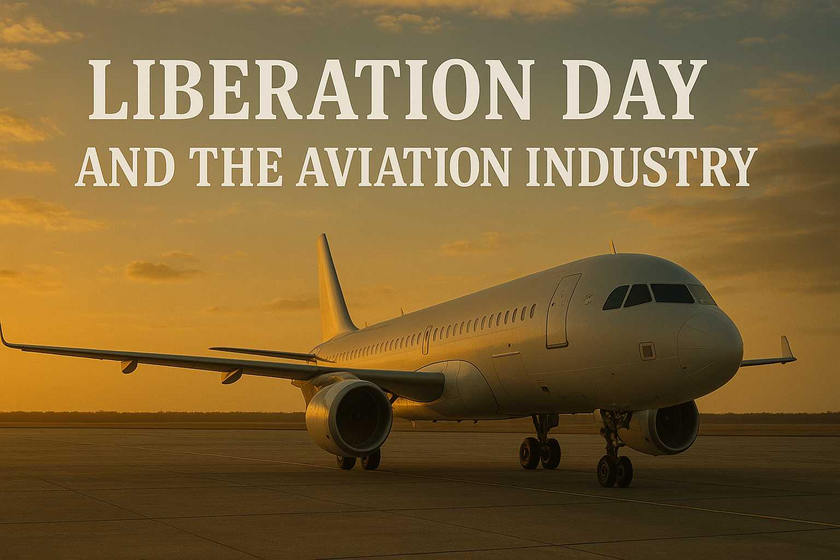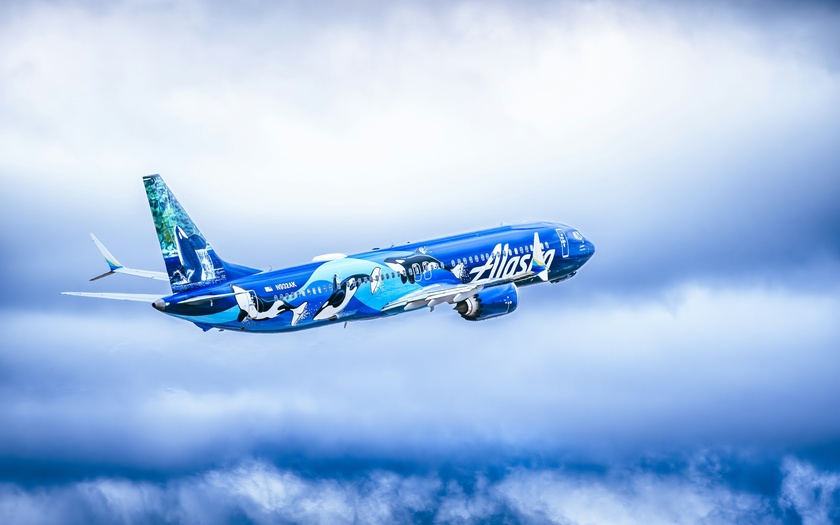
The aviation industry is at a crossroads. As enthusiasts and active practitioners in this space, we want nothing but the best for aviation. However, to secure its future, we must address the challenges and flaws currently affecting the industry. Over the years, this newsletter has warned of rising inflation, airline bankruptcies, layoffs, and more—many of which are now playing out.
In this article, we focus on three key factors that will have a significant impact on the aviation industry moving forward. These are issues that we, as practitioners, must remain vigilant about to safeguard our work, our livelihoods, and the future of the industry.
- Inflation is increasing, and economic conditions are worsening, making it difficult for airlines to maintain revenue while facing rising operational costs.
- The U.S. air traffic control system is outdated, with antiquated technologies and procedures that are contributing to high-profile aviation incidents.
- Regulatory burdens are increasing, especially in the EU, potentially harming the industry more than they help.
With these major issues looming over aviation, the question remains: Can DOGE, the FED, or aviation regulators actually solve them?
Get Involved: What do you think? Are these the biggest challenges facing aviation today? Please share your thoughts in the comments below.
Rising Inflation and Worsening Economic Conditions
For the past two years, this newsletter has repeatedly warned that inflation—though momentarily subdued—would rise again. While many believed inflation had been tamed after peaking at 9.1% in 2022, our prediction has remained consistent: inflation will surpass previous highs in the coming years.
Despite DOGE’s cost-cutting efforts within the federal government, the underlying economic forces remain unchanged. Low interest rates, an increasing money supply, and looming trade wars are fueling inflation and worsening economic conditions. The aviation industry is feeling the impact in several key ways.
Airline Mergers and Restructuring
The past few years have seen major airline merger attempts blocked by the federal government. The failed Spirit-JetBlue and Hawaiian-Alaska mergers are prime examples. These airlines sought mergers to achieve synergies, reduce costs, and remain competitive. However, the DOJ’s intervention left them in precarious financial positions—particularly Spirit Airlines, which ultimately had to file for Chapter 11 bankruptcy.
Layoffs Are Here
We have long predicted that airlines and aviation businesses would be forced to lay off employees en masse. Other industries—such as tech and grocery chains—have already undergone massive layoffs, and the same trend is now hitting aviation.
On February 17, 2025, Southwest Airlines’ CEO Bob Jordan sent a memo to employees announcing a 15% reduction in corporate positions, affecting 1,750 jobs. This marks a historic shift for Southwest, which has prided itself on avoiding large scale layoffs for over 53 years.
"We have made the very tough decision to move forward with a reduction in our workforce, focused almost entirely on Corporate and Leadership positions. This reduction affects approximately 1,750 Employee roles, or 15% of Corporate positions." —Bob Jordan, President & CEO, Southwest Airlines, 2025
If Southwest Airlines—a historically profitable carrier—is forced to cut jobs, we can expect other airlines to follow suit. Some may announce large-scale layoffs, while others may opt for “quiet layoffs”, reducing staff through attrition, reduced hours, and internal reorganizations.
On Aviation™ Note: Airlines have avoided major layoffs until now because of massive government support during economic downturns. However, government assistance has limits. As economic conditions deteriorate, airlines must take action to ensure their survival..
Outdated ATC Technology and Procedures
For years, aviation practitioners have criticized outdated air traffic control (ATC) systems in the U.S. and Canada. These antiquated technologies and inefficient procedures have contributed to serious aviation incidents.
A recent GAO report highlighted the dire state of U.S. ATC infrastructure:
"A federal watchdog raised concerns about the Federal Aviation Administration’s air traffic controller systems, saying that many are critically outdated and that the agency’s heavy reliance on them could jeopardize the safety and efficiency of the nation’s airspace."
The report found that:
- 37% of ATC systems are “unsustainable” due to aging technology.
- Many lack spare parts, making repairs difficult and expensive.
- Staffing shortages are reaching crisis levels, with 90% of U.S. ATC facilities operating below FAA-recommended staffing levels.
Despite political debates over FAA hiring policies, the real issue is that the FAA operates as a bureaucratic entity, not a profit-driven organization. This means that economic calculations—such as return on investment and risk assessment—are not factored into FAA decision-making.
"Long before DEI hiring, the U.S. ATC system was already one of the worst in the developed world. The recent rash of near-collisions is the result of chronic mismanagement that has left the system with too few controllers using absurdly antiquated technology." —John Tierney, Aviation Analyst
On Aviation™ Note: Many argue that government oversight is necessary for managing large aviation operations. However, the privately managed Heathrow Airport in the UK is a prime example of how a private entity can efficiently run a major international airport.
Heavy and Increasing Regulations
Many equate regulations with safety. However, history has shown that overregulation can lead to unintended consequences, such as regulatory capture—where major corporations manipulate regulations to stifle competition rather than improve safety.
One of the latest examples of burdensome aviation regulations comes from the European Union’s ReFuelEU Aviation initiative.
The ReFuelEU policy:
- Mandates the use of Sustainable Aviation Fuels (SAF), which cost 250% more than conventional jet fuel.
- Bans fuel tankering, a practice airlines use to reduce costs by refueling at cheaper airports.
- Forces airlines to purchase expensive SAF, driving up ticket prices for consumers.
As fuel accounts for 25-30% of an airline’s operating costs, these policies significantly impact airline profitability. Moreover, EU airlines must compete with U.S. and Gulf carriers—which do not face similar regulations—placing them at a competitive disadvantage.
On Aviation™ Note: While regulations have their place, poorly designed policies can harm both airlines and consumers. Instead of fostering competition and efficiency, overregulation often leads to higher costs, reduced competition, and fewer choices for passengers.
Conclusion: The Future of Aviation Remains Uncertain
The aviation industry faces three critical challenges: rising inflation, outdated ATC infrastructure, and burdensome regulations. These factors are converging, creating serious risks for airlines, passengers, and industry stakeholders.
Can DOGE, the FED, or regulators solve these problems? History suggests otherwise. Government interventions often fail to address core inefficiencies and instead create additional problems.
For aviation to thrive, it must adapt. Privatization of critical infrastructure, regulatory reform, and strategic cost-cutting will be essential for ensuring long-term sustainability.
Thank you for reading this week's On Aviation™ full article. What do you think? Are these the biggest challenges facing aviation today? Please share your thoughts in the comments below. Remember to check out our On Aviation™ Podcast and continue the conversation on our Twitter and Instagram.
Orlando Spencer - On Aviation™
References
Southwest Airlines. (2025, February 17). Message from Southwest CEO Bob Jordan. https://www.swamedia.com/news-and-stories/news-release/message-from-southwest-ceo-and-president-bob-jordan
U.S. Government Accountability Office. (2024). FAA Actions Are Urgently Needed to Modernize Aging Systems (GAO-24-107001). Retrieved from https://www.gao.gov/assets/gao-24-107001.pdf
European Commission. (2025). ReFuelEU Aviation – Sustainable aviation fuel initiative. Retrieved fromhttps://transport.ec.europa.eu/transport-modes/air/environment/refueleu-aviation_en

















